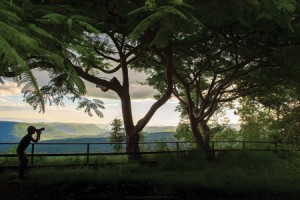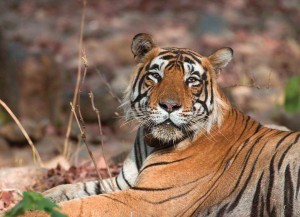You love the camera and you love the outdoors. Why not combine them both and stalk fourlegged furry creatures for a career in wildlife photography? Shreeja Mahambre shows the way
It’s one thing to take pictures of people, quite another to take pictures of animals. If you think taking people portraits is hard, reconsider you stance. People might complain and whine about their pictures; animals don’t, but they’re far more reclusive about stepping out of their homes for a shot in the first place.
Wildlife photography is one of the more challenging branches of photography. In the wild there is very little that is under your control. You are subject to extreme weather, poor shelter, scarce food, and most of all, exposure to the wild and all its creatures. Some find this daunting and unnecessarily hassling. Some others thrive in this environment, fuelled by a rush of adrenaline and curiosity.
A globetrotting endeavour
A wildlife photographer needs to travel to that part of the world where they can find their appropriate subjects. For example, a photographer shooting lions will head to their home turf in Africa. A photographer in search of snow leopards might camp out in the Himalayas.
The job requires the photographer to be comfortable living outdoors for long periods of time. They should be skilled enough at trekking, hiking and other outdoor activities. At the same time the photographer needs also be familiar with the habits and behaviours of animals.
“A wildlife photographer must have minimum knowledge of identifying birds and animals, how to spot and track them, identifying calls, etc. Being a naturalist helps a lot, that is, good field knowledge of the subjects like mammals, birds, their habitat and behaviour pattern, etc,” says Rathika Ramasamy, a Delhi-based wildlife photographer. “Patience and perseverance is a must. Unlike other genres of photography you won’t get instant results, for the perfect shot you may have to wait for days or even weeks. One should prepare to spend more time on the field to get good results.”
Entering the profession
Studying photography is essential as it provides the requisite training. This may be undertaken either through a degree or a diploma course. There are plenty of workshops as well, arranged by professional photographers to teach amateurs the art. Wildlife photography especially requires training as precision, a good eye and perfect timing are necessary to get perfect images. These develop with regular practice.
Most wildlife photographers freelance. Their photographs are bought and published in books and magazines. They may also work for NGOs for their preservation and awareness campaigns. Wildlife photography may also be taken up as a part-time profession.
Perks
It’s everyone’s dream to travel the world and see all the natural beauty it has to offer. A wildlife photographer gets to do just that and gets paid for it too. This profession does not require sitting in an office from morning to evening, plodding away at a 9-to-5 job. Without a pay master, the photographer is free to determine his fees and charges.
Challenges
The very aspects that are alluring about the job also double up as challenges. Wildlife photographers spend long durations outdoors, visiting various forests or sanctuaries. The freelance nature of the job does not guarantee job security either. “Initial equipment investment and travelling is high, you can’t expect any instant return,” adds Ramasamy. Photography equipment for shooting outdoors is expensive and requires continual maintenance. Scope in India
Our country is rich in its flora and fauna and natural diversity. There is no shortage of subjects to photograph. Wildlife photography, therefore, is already the choice of profession for many people, but there is always room for more as the career transitions from a niche to a more mainstream one.
CAREER FACTS
WILDLIFE PHOTOGRAPHY
JOB PROFILE: The job of a wildlife photographer is to obtain pictures of animals in their natural habitat. In this quest she/he travels to various places known for their flora and fauna. These pictures might be published in books or magazines.
INCOME: Varies as most wildlife photographers are freelancers. Some charge as little as Rs. 1,000 a picture, and some as much as
Rs. 15,000.
SKILLS: Knowledge of the camera, interest and knowledge of the natural world and animal habitats, the ability to survive in any environment
STUDY:
* Delhi School of Photography, New Delhi
* Asian Academy of Film and Television, Noida
* Osmania University, Hyderabad
* New York Institute of Photography, USA
* University of the Arts London, UK
TIPS FOR BUDDING WILDLIFE PHOTOGRAPHERS
• Know your equipment. Not any and every camera is suitable for wildlife photography. An interchangeable lens camera is recommended so that you can juggle between long and short lenses for shooting at long and short distances from animals.
• Understand the weather. Sunny skies may seem perfect for shooting, but too much light makes for harsh images that have stark shadows. A cloudy sky may filter light but might result in duller images. Watch the weather forecast to know if you need to carry your flash and/or other lighting equipment.
• Take either wide shots or go really up close. There is no mid-point. A wide shot creates more context – the location, the environmental conditions, etc. A rather close shot makes for a more abstract and aesthetic picture.
Volume 4 Issue 2
































